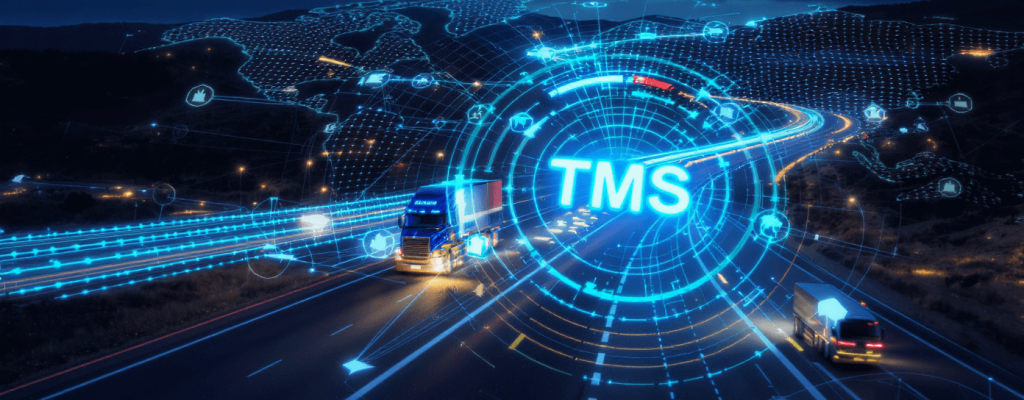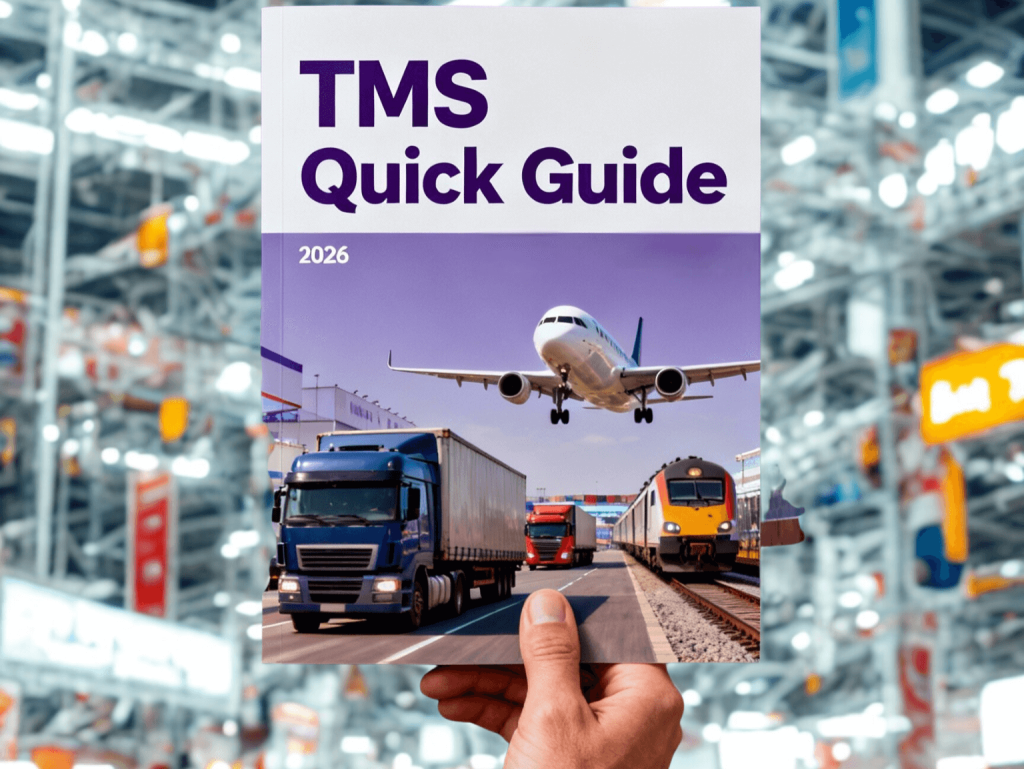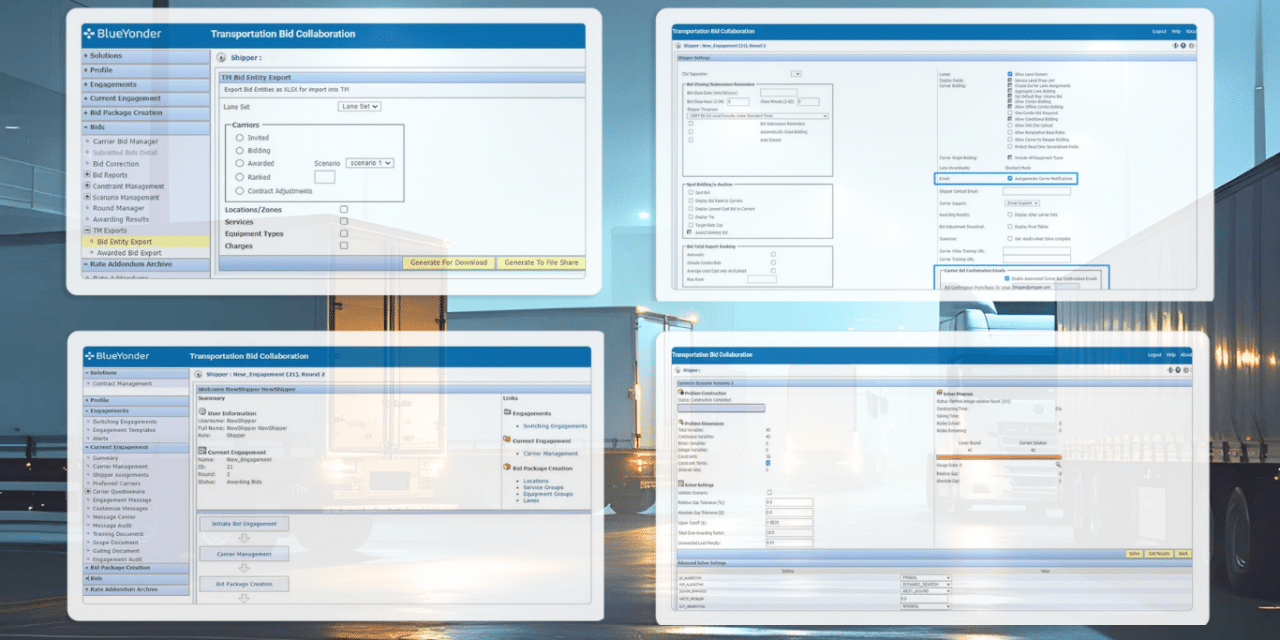The step-by-step process before selecting a TMS
Implementing a TMS (Transportation Management System) is one of the most impactful technology investments for any transportation operation. A well-selected and well-implemented TMS helps reduce transportation costs, improve service levels, and increase visibility across the end-to-end supply chain. But achieving these results requires a structured approach, from understanding your business transportation needs to taking the system live with the right governance model.
This quick guide is designed for companies preparing to start their TMS journey. It outlines each phase, including deliverables, roles, evaluation criteria, and common mistakes during RFP and selection processes.
1. Internal Preparation: Why a TMS and What For?
Objective: Align the organization, goals and resources before inviting vendors.
What to do
Define realistic, measurable objectives (e.g., “Reduce annual transportation cost by 8%” or “Cut planning time by 60%”).
Identify all stakeholders (operations, IT, logistics, business, finance, procurement) and assign an executive sponsor and a project owner/PMO.
Gather accurate baseline metrics: cost per km/pallet, annual transportation cost, number of shipments, planning time, % consolidated loads.
Set an initial budget and timeline.
Deliverables
Objectives & KPI document
Project team and governance structure
Initial project timeline
Frequent mistakes
Not involving IT or senior leadership early
Vague or conflicting objectives across departments

2. RFI: Initial Collection of Vendor Capabilities
Objective: Explore potential TMS vendors based on high-level capabilities and strategic fit.
What should a strong RFI include?
Company profile: scope, volumes, geographies, transportation modes
High-level requirements: execution, planning, visibility, ERP/WMS/telematics integrations, reporting, financials, freight audit, cloud/on-prem
Regulatory needs (customs, digital documentation)
Support expectations and SLAs
Relevant references
How to evaluate
Functional fit (yes/no criteria), industry experience, local presence, 24/7 support
Request a generic demo from the most promising vendor
Deliverables
A list of 4–6 vendors for the discovery/RFP phase
Mistake to avoid
Going too deep with all vendors at this stage. Focus on understanding your position, mapping your needs, and aligning them with the capabilities of the TMS market.
Asking for full tailored demos too early.
3. NDA (Non-Disclosure Agreement)
Objective: Protect sensitive operational data before exchanging detailed information. No vendor will share cost estimates at this stage and you shouldn’t disclose any sensitive internal information without a signed NDA.
Actions
Prepare a standard NDA covering data usage, duration, responsibilities and exclusions
Have all shortlisted vendors sign it before RFP or discovery sessions
Deliverable
Signed NDA for each vendor
Tip: Avoid overly restrictive NDAs that could delay progress or your timelines. Be aware that the governing law or jurisdiction specified in the NDA may limit its enforceability.

4. Discovery Sessions: Deep Operational Understanding
Objective: Ensure that vendors understand operational processes to identify gaps and design the right solution.
Discovery includes
Workshops with planning, operations, procurement, billing, and IT
Mapping the full process: from purchase order to freight invoice and analytics.
Defining business rules: priorities, constraints, time windows, vehicle restrictions
Recommended format
1 consolidation session and Q&A after some days
Document “as-is” processes and “to-be” goals with diagrams and real examples
Deliverables
Discovery document (processes, exceptions, IT impacts)
Prioritized list of functional and technical requirements
Tip: Record and document everything, this is the backbone of your RFP and testing plan.
5. Requirements Specification
Objective: Convert discovery findings into a clear, testable requirements document.
Suggested structure
Functional requirements (multi-stop planning, optimization, resource assignment)
Non-functional requirements (security, performance)
Integrations (ERP, carrier TMS, telematics, EDI/API)
Master data and quality rules
Project requirements: phases, resources, training
Acceptance criteria and UAT approach
Tip: Prioritize using Must have/ Nice to have / Desirable).
Deliverable
Complete requirements specification
6. RFP: Request for Proposal
Objective: Request detailed, comparable proposals from shortlisted vendors.
What to include
Executive summary and context
Functional and technical requirements
Project scope, target timeline, pricing model (SaaS vs. on-prem, implementation services, support)
Response format: demos, tests, references, proposed team
Evaluation criteria and weighting (e.g., functionality 40%, cost 25%, implementation plan 20%, sector experience 10%, SLA 5%)
Pricing templates and TCO for 3–5 years
Process
Provide a reasonable response window (2–4 weeks)
Enable Q&A with deadlines
Deliverables
Structured and comparable proposals
Common mistakes
Not requesting full TCO (maintenance, integrations, inflation-related increases)
7. Proposal Evaluation & Demos
Objective: Compare vendors objectively and validate their capabilities.
Key actions
Review proposals against the requirements matrix
Request demos focused on critical processes with real scenarios
When possible, ask for access to a sandbox environment
Validate references and customer success stories
Useful tools
Scoring matrix
Predefined UAT scenarios
Deliverables
Final shortlist of 2 vendors
Documented feedback for each vendor
Tip: Always request the project proposal and commercial terms separately. Your technical team’s evaluation will remain unbiased if you separate cost considerations from functional and technical capabilities in the proposal.
8. Negotiation & Vendor Selection
Objective: Secure favorable commercial and contractual terms.
Key negotiation points
Pricing model (SaaS by user/transaction, on-prem license + maintenance)
- Discuss future renewal costs, as well as updates and migration expenses for new releases.
Scope of implementations and cost of change requests
SLAs and penalties
Data ownership, access and exportability
Product roadmap and support commitments
Termination and exit clauses (data extraction)
- Link payment milestones to deliverables during implementation
Tip: Avoid rushing the project start date before negotiations. Negotiating at the end of a quarter or fiscal year can often be more advantageous.
Deliverable
Signed contract for TMS license and implementation
9. Implementation: Governance and Project Phases
Objective: Deploy the TMS with minimal operational disruption.
Typical phases
Kick-off & governance: finalize team, plan, risks
Detailed design: configuration, business rules, data mapping
Integrations & data migration: ERP, WMS, carriers, telematics; unit and integration tests
Configuration & customizations: rates, routes, templates
Testing: functional, integration, performance, UAT with real cases
Training: train-the-trainer + operational sessions
Pre-production/pilot: shadow mode if possible
Go-live: phased rollout or big-bang
Hypercare (4–8 weeks)
Transition to operations & continuous improvement
Key roles
Sponsor, internal PM, Product Owner, IT Lead, Super Users. On vendor’s side: PM, TMS solution architect, TMS consultants and Client partner.
KPIs during implementation
Milestone completion %, defect backlog, average resolution time, data accuracy post-migration, planning execution time
Critical mistakes
Skipping real-data testing
Missing key users in UAT
Poorly defined integrations (main cause of delays)
10. Post–Go-Live Governance & Success Measurement
Objective: Ensure the TMS delivers measurable value and evolves with the operation.
What to track
KPIs vs. baseline at 30/60/90/180 days
Quarterly roadmap reviews with the vendor
Change management and version control
Continuous training and KPI dashboards
Recommendation
Conduct Business Value Reviews at 3/6/12 months to quantify savings.
Consider specialized TMS support for the first year—your planners will have questions, and expert support accelerates learning and issue resolution.
Driving Value with Your TMS
Implementing a TMS is not just about buying software, it’s a full operational and technological transformation. Success depends on solid internal preparation, a structured selection process (RFI → Discovery → RFP), and a rigorous implementation supported by real-data testing, strong governance, and clear KPIs.
If your goal is to improve visibility, reduce transportation costs, and boost service levels, following these phases—and ensuring collaboration between operations and IT from day one—will significantly increase your chances of a successful TMS implementation.
CONTACT BLUEGISTICS
Inicie la evolución digital de su cadena de suministro con la ayuda de nuestro equipo de especialistas y consultores acreditados. Le acompañaremos desde la selección y el análisis de la solución hasta su implantación, gestión tecnológica y asistencia.
English
- DÍGANOS QUÉ NECESITA
- NOS PONEMOS EN CONTACTO
- REALIZAMOS UN ESTUDIO PERSONALIZADO




